
We are celebrating 15 years — and counting — of stories that are deeply researched and deeply felt, that build a historical record of what the city has been.
We are celebrating 15 years — and counting — of stories that are deeply researched and deeply felt, that build a historical record of what the city has been.
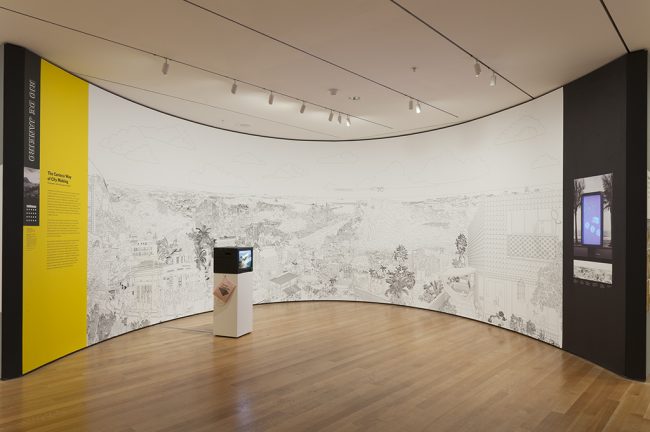
Installation view of Uneven Growth: Tactical Urbanisms for Expanding Megacities showing wall graphic of Rio de Janeiro, November 22, 2014–May 10, 2015 | © 2014 The Museum of Modern Art, New York, photograph by Thomas Griesel
In November, the third installment in MoMA’s Issues in Contemporary Architecture series — Uneven Growth: Tactical Urbanisms for Expanding Megacities — opened. Criticisms quickly followed. The exhibition aims to apply lessons of tactical urbanism — bottom-up, small-scale, often ad hoc strategies of urban design implemented by independent citizens, organizations, and governments alike — to address the rapid and imbalanced growth of six global metropolises. There are elements of the old and the new in the exhibit’s approach, beginning with the same tired statistic that many know all too well at this point: that “by 2050, half of the world’s population will live in cities.” But unlike its two predecessors curated by Barry Bergdoll — Rising Currents and Foreclosed — Uneven Growth under the stewardship of Pedro Gadanho eschews physical models for flashy wall graphics, video, and sound that hide both a lack of content in some proposals and nuance in others.
Uneven Growth, unfortunately, lives up to its all-important adjective. It is highly uneven, in terms of the quality of work across the six design teams and in the scale of solutions relative to the problems they seek to confront. The “growth” on hand is both spatial and economic, and each proposal would ideally confront the manifestations of each: informal developments without the benefit of integration with the larger infrastructures of the city and the marginalization that undermines the economic promise that moving to urban areas can provide.
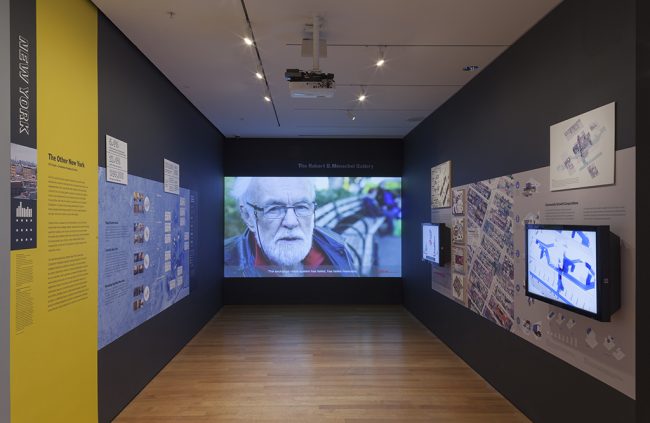
Installation view of Uneven Growth: Tactical Urbanisms for Expanding Megacities showing proposals for New York, November 22, 2014–May 10, 2015 | © 2014 The Museum of Modern Art, New York, photograph by Thomas Griesel
Even in conceiving of the exhibition, the pairing of tactical urbanism with the problems of economic inequality and unplanned, informal settlements seems marred by the large gap in what the former can achieve in the context of the latter. This gap shows through in all the proposals, even those that warrant a closer look like the two for New York. Many teams’ outright abandonment of tactical urbanism in their proposals speaks volumes about those strategies’ inadequacy to confront the issues the exhibition wanted them to treat.
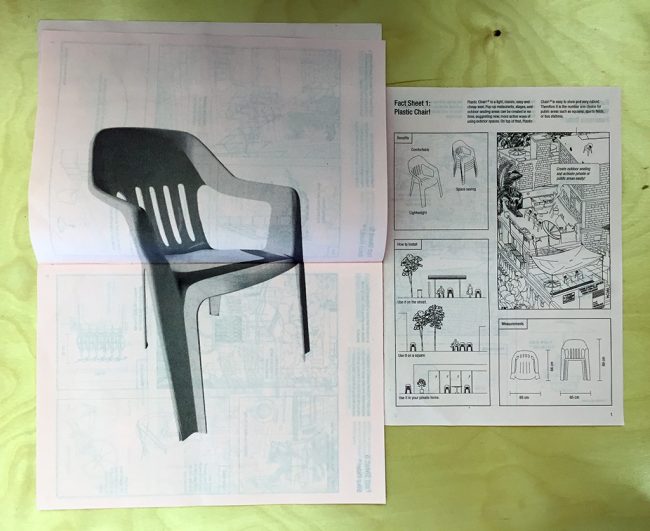
The Plastic Chair! advertised in the Rio de Janeiro proposal by RUA Arquitetos and MAS Urban Design ETH
Rio de Janeiro, in the work of RUA Arquitetos and MAS Urban Design ETH, gets a cynical proposal that recycles small retrofits already common to favelas to create a catalog of products to shade a balcony, provide a seat, or light a home. While the ingenuity of resource-constrained communities is not to be overlooked, that ingenuity only seems commercialized and co-opted here. And instead of serious proposals, the audience gets a nicely drawn mural of Rio’s hills and beaches and full page spreads of plastic chairs marketed as “Plastic Chair! ®.”
Hong Kong and Lagos both find themselves with dreamy futures. This is not inherently a bad thing — Rising Currents and Foreclosed both benefited greatly from ambitious proposals that may be far from reality. The Lagos proposal, by NLÉ and Zoohaus/Inteligencia Colectivas, is the closer of the two to this productive speculation, envisioning an expansion of the city into Lagos Lagoon and water transport extending into the city center, but the proposal is dominated by attractive visuals rather than a much-needed argument for why such a plan is worth considering. Hong Kong, on the other hand, would (tactically?) grow by eight islands to deal with rising sea levels and population pressure, but the scheme, illustrated beautifully by MAP Office and Network Architecture Lab, is not just speculative; it’s overly imaginary. The idea of creating distinct islands defined by different needs or problems — the Island of Surplus is an “unstable archipelago of discard material;” its neighboring Island of Memories is “a continuous collector of our digital data — images, texts, passwords, etc.” — does little to prompt new thinking on these demands.
For Istanbul, Superpool and Atelier d’Architecture Autogérée propose smaller-scale retrofits to recent mass housing developments, promoting greater community amid the isolated towers by fostering space sharing and local engagement through an alternative, local marketplace. Though it seems naïve in its assumptions about how willing individuals would be to share things like dining rooms or how transformative that would actually be, rethinking the typology of these housing developments is worthy of future exploration. Imaginative manipulations of the similar towers-in-the-park model in the US have shown promise, among them retrofits for ground floor retail and tweaks to capitalize on their suitability for naturally occurring retirement communities.
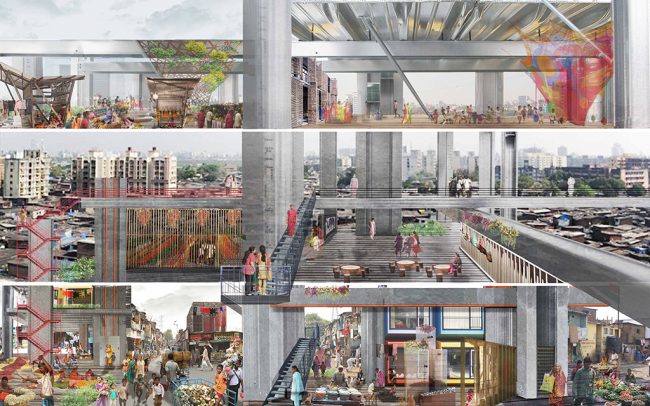
Reclaiming Growth, Perspective of Mumbai with ultra-light growth and supragrowth, 2014 | Image courtesy of Ensamble Studio/MIT-POPlab
Mumbai rightly celebrates the status quo and expands upon it, making it one of the more practical proposals. The team of URBZ and Ensamble Studio/POPlab focus on tool-houses, live/work spaces built in informal settlements, as an important multi-use structure to be nurtured in the face of their increasing redevelopment into single-function high-rises. The creation of a superstructure on which these live/work spaces can expand upward is identified as an unobtrusive support to existing trends rather than wholesale reimagining of how the city gets made. The approach strikes me as a beneficial one and is refreshingly illustrated with a video showing the construction of such a structure, a proof of concept that no other team comes close to showing.
The real meat of the exhibit lies with the city it calls home: the two distinct proposals for confronting the uneven growth of New York City were by far the most convincing and most productive on display (and perhaps telling of a home field advantage gone uncorrected). Rather than collaborate on a single approach to create new affordable housing and other community institutions, SITU Studio and Cohabitation Strategies chose different paths — one based on incentives and the market, the other largely forswearing the market for government and non-profit subsidization and support. New York’s bit of Uneven Growth is certainly better for these divergent takes. These policy proposals, further distinguished from most of their counterparts in their potential feasibility and the explanation of how they’d function, should be considered further.
SITU starts from the problem of a decreasing amount of buildable land on which new housing and services can actually be constructed, the systematic causes of our lack of affordable housing (well explained in an exhibition video), and an analysis of symptomatic illegal subdivisions and over-occupation in low-income neighborhoods. So they look to add to already built-up areas, on top of existing rooftops and in backyards that now give a green tinge to block interiors, all to be connected by new public stairways and alleyways that provide the infrastructure to allow the addition of new structures. These additions, to include both businesses and housing, would be funded by a hypothetical Community Growth Corporation (CGC). Local landowners who own affordable properties that don’t max out the buildable area of a specific plot of land would be able to transfer that area to a CGC in exchange for shares; the CGC would then auction off that buildable area to developers who want to increase the density of their developments elsewhere. Owners of CGC shares earn interest off the proceeds of these auctions to fund improvements to their buildings, and the CGC then directs additional funds to the construction of housing and services in the local neighborhood based on a neighborhood voting system. Whether that voting is made up of all community members or just those with shares in the corporation is unclear, though the former seems an unlikely, if more democratic, iteration.
The model, despite intentionally “riding the line between provocation and something which could be implemented,” is laudable for working largely within our existing real estate paradigm, thus bolstering its potential. But even given its deliberate stretches, it seems flawed at numerous junctures. A stated purpose of the scheme is incrementalism, an attempt at fitting under the tactical urbanism banner, and to largely preserve the scale and fabric of existing communities. Both gradual additions and preservation of the existing are at odds with the city’s massive housing challenge, which requires near-term and large-scale action that can’t commit to making sure the suburbs remain quite so suburban. How the CGC decides where to invest its funds also looks suspect: shareholders would seem to legally have more of a say than others, and we’ve seen the uproar from existing homeowners when densifying a neighborhood is proposed. Even if they stand to benefit from selling their unused development rights, what guarantees that their decisions on how to direct CGC funds will be in the public interest, as the model implies?
The SITU proposal also lays out how new dwelling units would be constructed. Prefabricated modular housing and DIY instructions for small projects (think Ikea manuals on a building scale) would, they say, mean lower construction costs. Parametric design would allow for the modules to be fitted to local conditions. This, to me, seems plagued by a faith in technology that doesn’t add up with the economic argument for prefab modular construction. Prefabrication draws cost savings from standardization, repetition, labor reduction, and production in a controlled environment (i.e., a warehouse). But if structures aren’t standard, and are instead built one-off for different locales, computer modeling cannot drive the same savings, at least not now.
There are many caveats, but the proposal has enough substance to inform a discussion on what could be a better model for the funding and ultimate construction of affordable housing than what we have now. SITU’s proposal productively moves a discussion beyond itself.
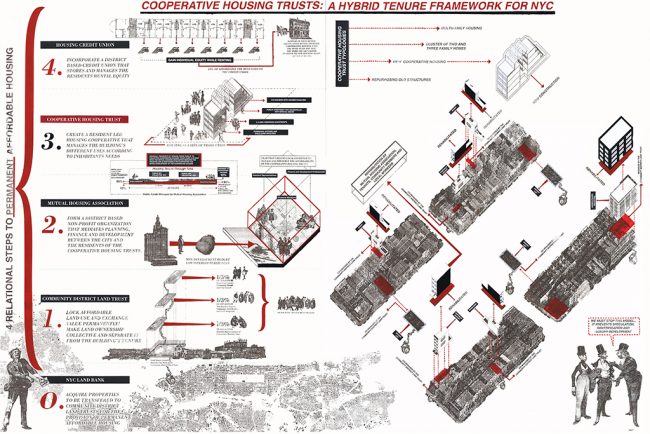
The Other New York. 2014. Cooperative Housing Trusts. Collage on Masonite, 2 panels, each 24 × 18 × 7/8″ (61 × 45.7 × 2.2 cm). | Image courtesy of Cohabitation Strategies (CohStra) | For additional images and a video explaining the proposal, visit CohStra’s website.
Just as SITU riffs on the transferable development rights regime already in New York, Cohabitation Strategies builds on the community land trust model, namely the Lower East Side’s own in Cooper Square. Their proposal, for a series of Cooperative Housing Trusts throughout the city, is essentially a scaled version of the strategy. A citywide land bank would acquire underutilized, vacant, or tax-delinquent land, which would then be owned and managed by district-level Community District Land Trusts. These trusts would lease the land to a Mutual Housing Association, essentially a non-profit developer. Together the land trust and housing association — the former made up of elected officials, residents, local business owners, nonprofits, and developers, and the latter of professionals in construction, planning, law, and finance — would decide what goes there. If they opt for housing, which is largely the idea, a Cooperative Housing Trust composed of a building’s residents would be formed. The Mutual Housing Association would get a loan from the City to construct the housing, the residents would gradually pay off the loan, and eventually, through the trust, own 90% of the building, The Mutual Housing Association would require that affordability be maintained in the units.
It’s an alluring proposal that puts a significant amount of power in the hands of residents, and one that benefits from precedents that are often celebrated among housing activists (Cooper Square and UHAB). The wrinkle in Cohabitation Strategies’ conception of the Cooperative Housing Trust is the demonization of private developers. Even though these developers potentially have a role in local Mutual Housing Associations, they are framed as enemies to affordable housing rather than potential allies. And while profit motive certainly does sideline public good in many private developments today, this isn’t inherent to the developer mindset. Rather than alienate a potential ally, the proposal should be recast to include them — the housing crisis realistically isn’t going to be solved without those who build most of the housing in this city. But Cohabitation Strategies’ emphasis on where best to direct City subsidy — in loans to nonprofit developers that will be repaid by residents’ payments — is instructive, as is the notion of hybrid ownership of land and property by the City, nonprofit developers, and resident groups.
The bulk of the criticisms I’ve seen levied at Uneven Growth are deserved, especially those that call out the profound disconnect between the problem meant to be tackled and the scale of the tactics meant to do the tackling. I do not, however, agree with the implication that because the exhibition underwhelms it was not worth staging. There are nuggets of inspiration and of future possibilities there. Rising Currents — which was far and beyond more successful than Uneven Growth from the outset thanks to its relatively implementable ideas — gained significantly more strength post-Sandy after its ideas gestated in the design community for years. New York’s housing crisis might yet provide the opportunity for SITU or Cohabitation Strategies’ models to take their next step. The exhibition is the right space for straddling between implementability and imagination. But I’d argue that the most productive, and most visionary, outcome from a show such as Uneven Growth is one that’s implementable (if wildly ambitious) and up to the task of solving the problem at hand. That balance was poorly struck in many of this exhibition’s products. It’s time to drop the sheen of the tactical (which many teams rightfully bucked) and let the designers and policy experts stick to the scale of the crisis.
The views expressed here are those of the authors only and do not reflect the position of The Architectural League of New York.
Comments